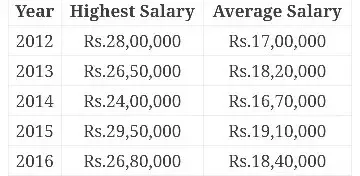Understanding Pilot Salaries in India: A 2023 Guide
In 2023, the aviation sector in India continues to recover and expand, paralleling the global resurgence of air travel. This resurgence directly impacts the demand for pilots, making their roles more pivotal than ever. This article delves into pilot salaries in India, exploring the myriad factors that influence these earnings and providing an up-to-date overview for aspiring and current aviation professionals.
Chapter 1: The Basics of Pilot Salaries in India
Pilot salaries in India are influenced by various factors including experience, the type of aircraft flown, and the employing airline. Generally, pilot compensation packages are comprised of a base salary, flying hours, and additional allowances. For a fresh commercial pilot license (CPL) holder, starting salaries can range from INR 1.5 to 2.5 lakhs per month. However, for experienced pilots, especially those flying international routes, the monthly earnings can soar to INR 5 lakhs and above.
Chapter 2: Factors Influencing Pilot Salaries
Experience and Rank
Experience significantly influences salary, with captains earning substantially more than first officers. Additionally, pilots with more flying hours and those who operate larger aircraft or international routes typically command higher salaries.
Airline Type
The type of airline is another crucial factor. State-owned carriers often offer benefits like pension schemes, making their total compensation packages more appealing. In contrast, private airlines might offer higher base salaries but with varying job security levels.
Regional Variations
Location also plays a role. Pilots employed in metropolitan cities or hubs of major airlines tend to earn more due to the higher cost of living and operational scales of their employers.
Chapter 3: The Salary Structure
Pilot salary structures in India are complex, consisting of a fixed base salary and variable components such as flying hour allowances, overnight allowances, and performance bonuses. The flying hour allowance is a significant part of a pilot’s salary, compensated on an hourly basis for the time spent flying.
Navigating the Landscape
As the aviation industry continues to evolve, so do the prospects for pilots in India. The introduction of new airlines and expansion of existing carriers are positive indicators for pilot salaries. However, aspiring pilots must consider the cost of training and qualifications, which can be substantial.
The Future Outlook
The future of pilot salaries in India looks promising, driven by the anticipated growth of the aviation sector. The government’s focus on enhancing air connectivity and the increasing preference for air travel among the Indian population bode well for the industry.
Final Thoughts
Pilot salaries in India are subject to a wide range of factors, reflecting the complexity and dynamism of the aviation industry. For those considering a career in this field, it’s crucial to weigh the initial investment in training against the potential long-term rewards. The path to becoming a pilot is arduous but can lead to a rewarding career, both financially and in terms of job satisfaction. As the skies open up more in 2023 and beyond, the demand for skilled pilots is set to rise, potentially leading to even better compensation packages and career opportunities.
In conclusion, the aviation industry in India is on an upward trajectory, and with it, pilot salaries are also expected to rise. Despite the challenges and initial costs, the career of a pilot in India remains a lucrative and fulfilling option for those passionate about aviation.
 Salary per Month Land the job you deserve
Salary per Month Land the job you deserve



